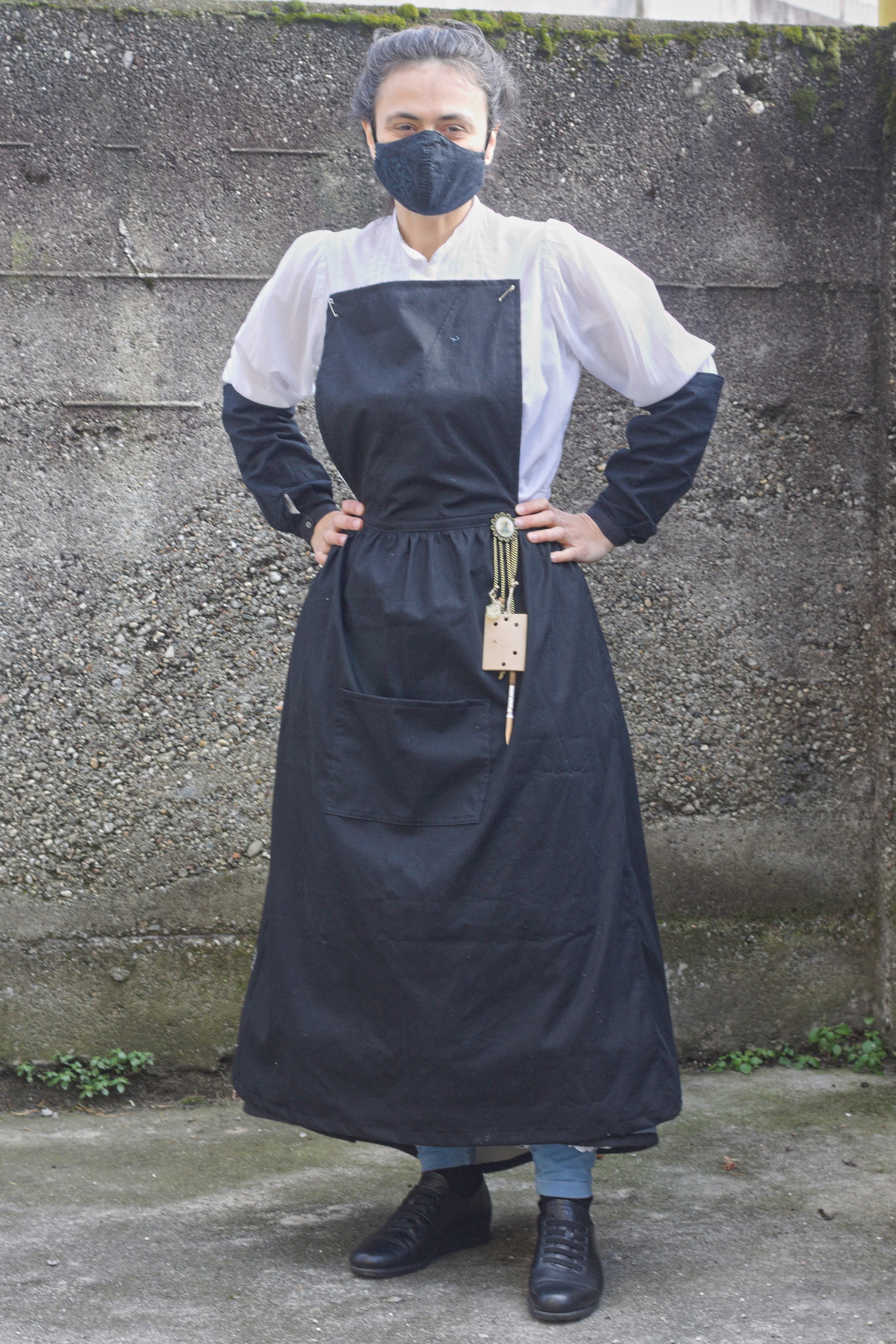Sleevelets¶

Sleevelets or sleeve protectors based on the instructions on [BB16] from 1916.
They are mostly machine sewed, and are quite a quick and easy project, suitable for beginners.
This is the variant with a buttoned cuff; an elastic may be inserted at the bottom (wider) end, but it will be the first part to get ruined in the wash, so the recommended plan is to sew the loops of elastic closed and wearing them on top of the sleevelets if needed. In many cases, the sleevelets are stable enough not to need the elastic anyway.
Materials¶
Fabric¶
~35 cm washable fabric
Medium weight cottons or linens in plain colours, checks or stripes are good; for office and shop work black is traditional, while in the kitchen or for housework it would have been white or gingham.
Notions¶
sewing thread to match the fabric;
buttonhole thread to match the fabric;
2 small buttons;
60–70 cm elastic (optional).
Pattern¶
Pattern¶
Get the valentina file for the pattern,
sleevelets-school_sewing-1916.val and decide or measure the
following measurements, set in the valentina pattern as variables:
#elbow_widththe circumference of the finished sleevelet at the elbow end, before gathering: in the original instructions this was 33 cm;
#wrist_widththe circumference of the finished sleevelet at the wrist end, before gathering: in the original instructions this was 5 cm less than the
#elbow_width;#lengthlength of the finished sleevelet, with the cuff excluded: in the original instructions this was 30 cm;
#cuff_circthe width of the cuff: the circumference of your wrist plus 2 cm;
#cuff_heightheight of the cuff: 2 cm is a good measure.
Instructions¶
Straighten the edge of the fabric by ripping or drawing a thread and cut two of the sleevelets and four of the cuff pieces; if the material doesn’t have a direction you can invert one of the sleevelets to reduce waste.
From the scraps, cut two rectangles of fabric 4 cm wide and as long as the slit plus 2 cm. Put them right sides facing on top of the slits and sew all around with a 2 mm allowance. Carefully cut the slit, turn the facing to the back, press. Fold down the edges of the fabric 1 cm on all sides except the top, clip the corners, press and topstitch in place by machine or hemstitch by hand.
Sew the side of the sleevelets with a french seam: fold a sleevelet with wrong sides facing, sew with a 8 mm allowance, press open, turn inside out with the right sides facing and sew again with a 10-11 mm allowance. Press towards the back. Repeat for the other sleevelet, taking care to press in the opposite direction.
Fold up the wider part of each sleevelet by 2 cm twice and either topstitch by machine or hemstitch by hand.
Note
If you prefer in this hem you may insert an elastic that is long enough to go around the top of your forearm snugly.
With right sides facing, sew two of the cuffs together at the top and sides with 1 cm allowance; clip the corners, turn inside out and press.
Put the right side of a cuff on the right side of a sleevelet, with the rounded edge at the top / front and distributing the excess fabric in a handful of small (1 cm) pleats, putting more on the top / front than on the bottom; sew and press towards the cuff. Fold the other allowance of the cuff and topstitch by machine or hemstitch by hand, enclosing all allowances.
Make buttonholes in the rounded end of the cuff and attach buttons to the other end.
Wear with the buttons on the inner wrist, closest to the thumb, where they don’t interfere with the use of the hands.